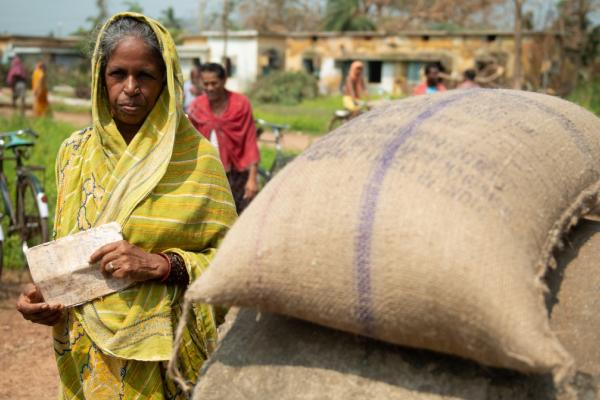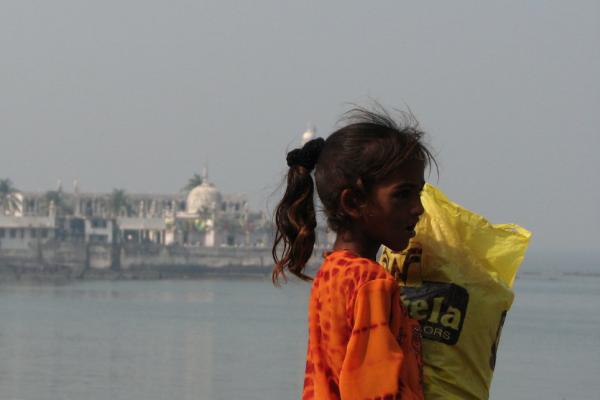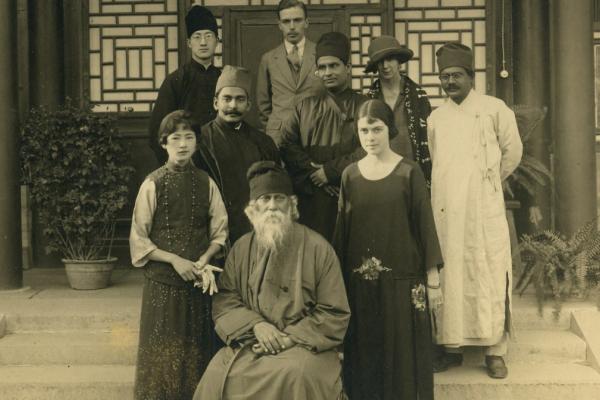What does the coronavirus pandemic mean for our collective futures? No one can be quite sure as the pandemic is far from over, but the variation among those offering answers to this question is striking. The starkest difference can be seen between those who see this moment as a turning point of the kind that will be discussed in the future in terms of ‘before and after’ Covid-19, and those who do not.
Turning Point or Not?
There have been remarkably few truly global turning points in the last century and a half, so calling the Covid-19 coronavirus pandemic a historic turning point is no small matter. In my view, the World Wars and the Great Depression meet that high standard, while the ‘End of the Cold War’ does not. At the risk of considerable simplification, and focusing particularly on the intersection of geopolitics and biopolitics, I propose that analysts of this crisis can be divided into four largely discrete but inevitably overlapping groups. Two kinds of optimists and two kinds of pessimists can be identified, all of whom see this moment as a critical time, but whose assumptions, evidence and prognostications differ considerably.
Optimists and Pessimists
Within the set of those who argue for this moment as an irreversible world-historic turning point, there are two positions: one more hopeful, the other less so.
Progressive voices are confident that given the lessons learned from this crisis, we have seen the end of the so-called Washington Consensus that promoted the ideology of neo-liberalism. Neoliberalism, in essence, was a dominant elite view that looked to the private sector for answers and recommended reducing state activities to an absolute minimum. Evidence offered in support of this position includes how the virus has shown that there is no substitute for a well-resourced and responsive state. It has also offered unequivocal proof that universal and inclusive public health systems are a necessary public good, the absence of which puts us all at risk. Progressives see a more inclusive and just social contract in the future, a ‘new’ New Deal.
What we have are four future scenarios offered by, respectively, pro-state progressive optimists, end-of-globalisation pessimists, disaster capitalism pessimists, and techno-optimists.
Others, more pessimistically, see this moment as marking the end of the current era of globalisation and prefiguring a return to increased inter-state competition. In this view, our highly inter-connected world has acted as an unwitting vector of the pandemic by furthering and multiplying the spread of the virus; the crisis has shown the limits of international cooperation and multilateral institutions; dependence on international supply chains and just-in-time logistical systems have left countries more vulnerable than they would be otherwise. These, pessimists argue, are the main lessons national governments will take away from the crisis and augur a moment of relative international autarky.
For those who don’t see much real change coming (even as they view the current moment as a major crisis), again two positions are discernible. Pessimists read the pandemic in terms of disaster capitalism, to borrow Naomi Klein’s term, a moment which powerful private interests will exploit to further strengthen themselves. They look to the outcomes of previous crises, especially the 2008 financial crisis and 9/11. These antecedents show that due to their material resources and privileged access to information, entrenched vested interests are more able than others to take advantage of the disruptions caused by a crisis. The top 1% will emerge from the pandemic strengthened, they predict, reinforcing what is already a deeply unequal world, with all its resultant tensions and contradictions.
There is another group that also doesn’t see this crisis as a turning point, albeit for a very different reason. They see this moment instead as the latest challenge to the power of human ingenuity. For them, innovation materialised as technology is the answer. This group is the most optimistic of all, viewing this moment as only a temporary setback in the long struggle of humans over their environment. If, in the past, we have found answers to deadly diseases such as polio and smallpox, sent men to the moon and beyond and explored the deepest depths of the ocean, why will we not do so again? The only limit to human imagination for these optimists is a lack of confidence and faith in the ability of humans to overcome all problems. In short, this crisis will be weathered by a technological fix, something far easier to imagine and implement than the social upheavals implicit in other visions of the future.
At best we can say confidently that, first, the Covid-19 pandemic is not a ‘black swan’ event, it is better characterised as a ‘known unknown’ that experts knew was coming but didn’t know when or how it would manifest itself.
What we have are four future scenarios offered by, respectively, pro-state progressive optimists, end-of-globalisation pessimists, disaster capitalism pessimists, and techno-optimists. Stepping back, we can see that each of these positions has its strong points; Indeed, all of them may well turn out to be correct in some settings and to some extent.
These views must however be set against what we know about the pandemic, which, to be honest, is still very little. At best we can say confidently that, first, the Covid-19 pandemic is not a ‘black swan’ event, it is better characterised as a ‘known unknown’ that experts knew was coming but didn’t know when or how it would manifest itself. Second, this pandemic is not a natural disaster, it is a man-made event for two primary reasons. These are, first, the enforced proximity of wild animals to humans for commercial purposes in the now-notorious Wuhan ‘wet market’, and second, in the mismanagement of the situation once it was realised that a new virus had ‘crossed over’ to infect human populations. Third, the pandemic constitutes a crisis that has no discernable end. Hence, rather than calling it a moment, it should be considered an ongoing historical process. Finally, while the pandemic is indifferent to our usual fault lines of national origin, class, ethnicity, religion, and sexuality (but not age and gender), its effects are felt unevenly around the world due to existing social fault lines and prior resource endowments. Given these minimalist starting points, what can be said about these four scenarios?
Progressive Optimists
That a trusted, well-functioning and inclusive public health system can save lives is evident from the South Korean and Taiwanese experiences. Both cases join a highly responsive state apparatus with a population long disciplined to follow public health mandates. But this desirable outcome was far from inevitable. Korea’s current system is the result of decades of popular struggle wearing down the infrastructure of an authoritarian state, repeatedly calling governments to account, including most recently jailing a former president for corruption.
[W]e are in for what Antonio Gramsci called the interregnum, a moment when the old is dying and the new not yet born.
The missing piece in the predictions of progressive optimists, in other words, is the necessity for popular mobilisation around a message of universal inclusion. This call needs to be combined with constant vigilance from an empowered civil society that holds governments of all political leanings to account when they fail to deliver social goods at a high level of efficiency. Countries with a politically engaged middle class, weak political party systems, and a state apparatus that can reach across the ‘last mile’ are more likely to succeed in this task than others. Given these (relatively rare) conditions, the likelihood of these very desirable changes is low. Actual outcomes are likely to vary enormously around the world.
End-of-Globalisation Pessimists
The end-of-globalisation pessimists predict a rolling back of global inter-connectedness and the promotion of national self-sufficiency as a result of lessons learned from this crisis. The ongoing competition between a declining United States and a rising China is only likely to be exacerbated following the reduced virulence of the pandemic, suggesting that the prospects of greater (and much needed) international cooperation and coordination at the global level are less likely.
Faced with the intensification of international competition, countries will feel the need to diversify their international supply chains and to promote domestic capacities and national champions. Costs of goods will rise as a result, while global remittances are likely to decline alongside international trade and tourism. National resource monopolies will become useful points of leverage. Few countries however have the population size, resource base or depth of human capital to implement an autarkic strategy on a national scale.
The pandemic has no obvious end-point, even after a vaccine is successfully tested and made available universally.
Some countries will choose -- or be forced -- to align with the US, others with China, in return for privileged access to markets and aid. Others may opt for a strategy of greater regionalisation to compensate for limited national resource endowments. The tensions between pressures for alignment and regionalisation are most likely to be visible in regions that have long been associated with one or another hegemon while also having an established history of cooperation with their neighbours, namely, South America and Southeast Asia.
With the passage of time, a new era of globalization will undoubtedly emerge, yet without resolving the question that obsesses the geopolitically-minded: who’s on top? Rather, we are in for what Antonio Gramsci called the interregnum, a moment when the old is dying and the new not yet born. This is a period of turmoil without recourse to stable norms and standards, exhibiting a variety of what he called ‘morbid symptoms’.
Disaster Capitalism Pessimists
Disaster capitalism pessimists particularly have in mind the United States. The US might well be the most extreme example of a rich country that consigns those on the bottom end of the social scale to an entirely different morbidity profile than those at the top, but this trend is visible wherever the ideology of neoliberalism has taken root. This pessimistic projection relies heavily on conclusions drawn from the experience of recent economic crises and the 9/11 attacks. In 2008, for example, those who were most responsible for the economic crisis saw private losses bailed out by public funds, with few individual sanctions and little structural change. In the case of 9/11, an elite cabal was able to seize the opportunity to carry out a programme of massive geopolitical transformation based on an empirically-flawed ideologically-grounded set of beliefs. In both examples, the instigators and the deadly aftermath of their actions are still with us, decades later. Could this moment inaugurate instead another New Deal, rather than more of the same?
Neoliberalism must be replaced with a new standard, namely, a people-centric vision of a sustainable economic future.
In the US, the critical moment will be the elections scheduled for November 2020. If the American people can be induced to vote their interests rather than their fears and aspirations, for Congress as well as the presidency, elite capture of the crisis may well be averted. However, it must be remembered that this pandemic is not a ‘one-off’ crisis, similar to the historical antecedents already mentioned. The pandemic has no obvious end-point, even after a vaccine is successfully tested and made available universally.
We have few modern precedents for how the world will come to terms with this novel condition of a crisis with no end. The closest analogy might be the threat of total nuclear annihilation that characterised the Cold War. While we may have gotten used to ‘living with the bomb’, this existential threat also generated transnational political alliances that created nuclear free zones, campaigns to end nuclear testing, and most recently, an international convention (treaty) against nuclear weapons. What the global anti-nuclear movement showed and shows is not only that the majority of the world abhors nuclear weapons: it also demonstrates that global public opinion has and will shape(d) futures too.
Drawing from this experience, it becomes clear that what is indispensable for a less unequal future is the consolidation of a transnational political movement that disavows entirely the ‘common sense’ of neoliberal ideology. Neoliberalism must be replaced with a new standard, namely, a people-centric vision of a sustainable economic future. The anti-nuclear movement offers hope that such an outcome is possible, even as its limits suggest this model may not be enough to ensure meaningful and universal change.
Techno-Optimists
The final group of futurists are the techno-optimists. Their vision of the future is based on a Whiggish reading of the past, which sees human society as always improving due to the development and application of novel technological solutions. From Karl Marx to Elon Musk, measuring human progress by the advance of technology becomes a convincing portrayal of how crises are opportunistic triggers for new peaks of human endeavour. The march of technology, they propose, has managed to find solutions to problems ranging from food shortages to deadly diseases.
While true at one level, there are huge gaps in this seductive account. In medicine, for example, treating rare cancers takes priority over finding vaccines for malaria, while in agriculture, increasing gross output of foodgrains takes precedence over sustainable methods and the survival of small landholders. The technological fetish has, in general, led to public policies that forego addressing root causes in favour of solutions that do not question existing structures of inequality and unfairness. This leads to the reinforcement of existing social hierarchies even as the pandemic shows itself to be stunningly non-discriminatory in practice.
It is particularly telling that it is only when prominent and high-value individuals begin to get infected or die that the scale and severity of the crisis becomes apparent to all and impossible to ignore.
The power of the pandemic comes from its unequivocal demonstration that no one is beyond reach of the virus. It does not consider national origin, class, caste, ethnicity or sexuality in its effects (gender and age appear to matter, however, with men and the elderly more likely to be affected). Even so, some social groups are more likely to be afflicted than others due to the imposition of all-too-familiar logics of difference and hierarchy. These fault lines become visible when politicians propose that the elderly should sacrifice themselves for the good of the young, when countries follow a strategy of ‘herd immunity’, which, in the absence of a vaccine, forgoes universal testing and treatment for the ‘natural selection’ of the fittest, when millions of migrant workers are sent home without protection, when people living in slums are expected to adopt social distancing, or when some regions of a country are preferred over others in the supply of necessary medical equipment. Almost everywhere, we find that the powerful and well-connected are more likely to be able to get tested and treated promptly. It is particularly telling that it is only when prominent and high-value individuals begin to get infected or die that the scale and severity of the crisis becomes apparent to all and impossible to ignore. These outcomes reflect the strength of the social divisions in our world that even a non-discriminatory virus finds hard to overturn, technological virtuosity notwithstanding.
Turning from absences to actions. Techno-optimists rightly describe the 20th century as a series of stunning ‘victories’ over disease, from polio to HIV. But this account also excludes critical elements, the absence of which tells a very different story.
Consider the HIV epidemic, another zoonotic event of the recent past. First associated with a stigmatised community and their allegedly debauched lifestyle, the scope and scale of the HIV epidemic was long obscured due to a biased, uneven and haphazard public health response. It took years for the virus to be seen as a health crisis that was not restricted to gay men and to be correctly understood as a global issue. Public anger at state inaction led to radically new forms of activism which raised public awareness of the HIV crisis through dramatic demonstrations. Social movements such as ACT-UP even played a part in improving the medical response by constructively breaking down the boundary of expertise separating expert from layman and doctor from patient.
Techno-optimists will claim the end of the pandemic with the arrival of a viable vaccine. It won’t be.
Eventually, the scale of the problem was realised, funding improved and anti-retrovirals generated following a long and complex lab and clinical testing process. This led to an affordable drugs regimen being approved that allowed people with AIDS to survive infection and stay alive. This hugely positive outcome was far from guaranteed. It required a confrontation between Western pharmaceutical companies and national governments around the world. Indian generic drug manufacturers played an important role in making a life-saving cocktail available cheaply. South Africa and Brazil used sovereign powers to make these drugs available to their afflicted populations, overturning international norms in the process. There is however one more lesson to be drawn from the HIV-AIDS crisis, beyond indifference, bias, poor public health management and the value of social movements. HIV-AIDS may be under control, but it is not over.
This pandemic is likely to be like HIV in this respect. Covid-19 may come under control when a vaccine is found, but the crisis will not be over. Techno-optimists will claim the end of the pandemic with the arrival of a viable vaccine. It won’t be.
Two Conclusions
First, in the absence of concerted social action within and across national boundaries, the likelihood of change in the direction of inclusion and fairness, however desirable and possible, is very low. Due to the power of vested interests and the social tendency to fear any alteration of the status-quo, even a world-historic turning point (from the standpoint of exposing human vulnerabilities) may not change very much.
Second, what is unique about the Covid-19 pandemic is its lack of discrimination and universality of reach, joined with the absence of a distinct end-point to the crisis. What is not different is the unevenness of who is affected and who suffers more. This crisis is not a historic moment or ‘turning point’, as much as it is an historical process. The difficulty of coming to terms with this ongoing crisis in its fullness comes from the complexity of intersections of these three characteristics: universal, endless, and uneven.









